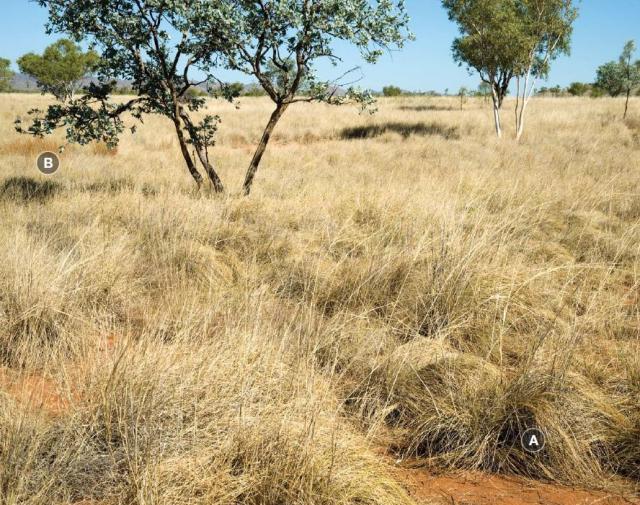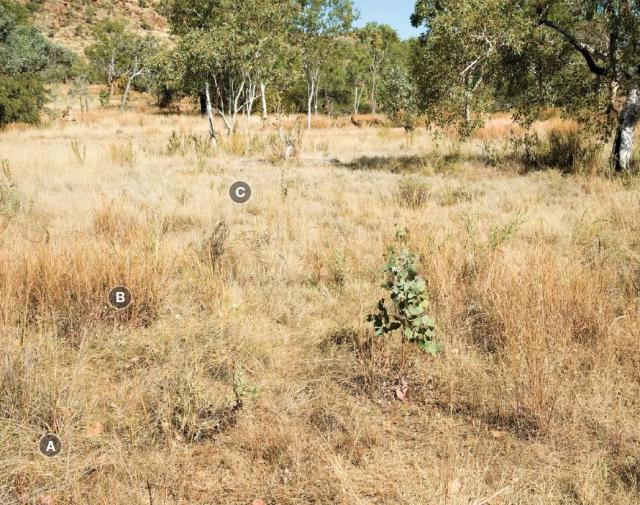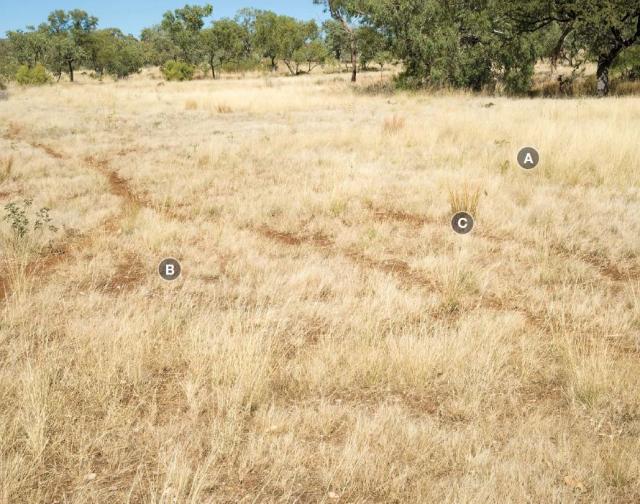Ribbon grass pastures
These pastures are part of the Kimberley red soil group - not spinifex pastures, and ribbon grass and plume sorghum are the identifier grasses. Use the interactive key to pasture condition to help identify pasture type.
Pastoral value
Ribbon grass pastures can include a wide variety of species, so the pastoral value can vary depending on which species are dominant. Ribbon grass is a resilient and productive plant, with very high palatability early in the season. It is also sometimes eaten late in the season. Where it dominates, the pastoral value of good condition ribbon grass pastures is high. As the condition declines, carrying capacity declines because of the increased proportion of annual and undesirable species in the pasture.
Occurrence
Ribbon grass pastures occur on level to gently sloping plains throughout the Kimberley. They are found on sands, loams and occasionally clays. They grow as open grasslands, or as grassy woodlands with bauhinias, eucalypts, beefwood and other tree species.
Pasture condition
Good: In good pasture condition, ribbon grass is dominant or co-dominant. Other co-dominants can be white grass and plume sorghum in the higher rainfall areas, or soft spinifex and curly spinifex in the lower rainfall areas. Isolated intermediate species, such as black speargrass, may also be seen. There is uniform tussock spacing and all plants are vigorous (Figure 1).

Fair: Cattle preferentially graze ribbon grass and other palatable perennial species, so heavy continuous grazing will lead to a gradual decline in the size and vigour of desirable species. Species in the pasture that are less preferred by cattle, such as black speargrass and limestone grass, increasingly dominate. Small patches of bare ground may be present and the proportion of undesirable species, such as threeawns, increases (Figure 2).

Poor: As the pasture condition declines towards poor condition, desirable perennial grasses become small, stunted and sparse, or may even disappear completely with only dead butts remaining. Few, if any, seedlings or young plants of desirables are seen. Intermediate species are scattered, having been exposed to higher grazing pressure in the absence of more-palatable species.
Undesirable species, such as threeawns, and annual grasses become more frequent. Limestone grass often dominates ribbon grass pastures in poor condition. There may be large patches with little or no perennial grass cover, and the risk of erosion is increased, particularly if the annual grasses dry out and blow away (Figure 3).

Associated plants
| Common name (link to DPIRD species page) | Scientific name (link to FloraBase) | Life form |
|---|---|---|
| Desirable species | ||
| perennial grass | ||
| perennial grass | ||
| perennial grass | ||
| perennial grass | ||
| Intermediate species | ||
| Wire grass, northern Wanderrie grass | perennial grass | |
| perennial grass | ||
| perennial grass | ||
| perennial grass | ||
| perennial grass | ||
| annual grass | ||
| Nineawns, bottlewashers, limestone grasses | Enneapogon spp. | annual or short-lived perennial |
| annual grass | ||
| Undesirable species | ||
| Unequal threeawn, feathertop threeawn | perennial grass | |
| annual or short-lived perennial grass | ||
| Northern kerosene grass | annual grass | |
| annual or short-lived perennial |


